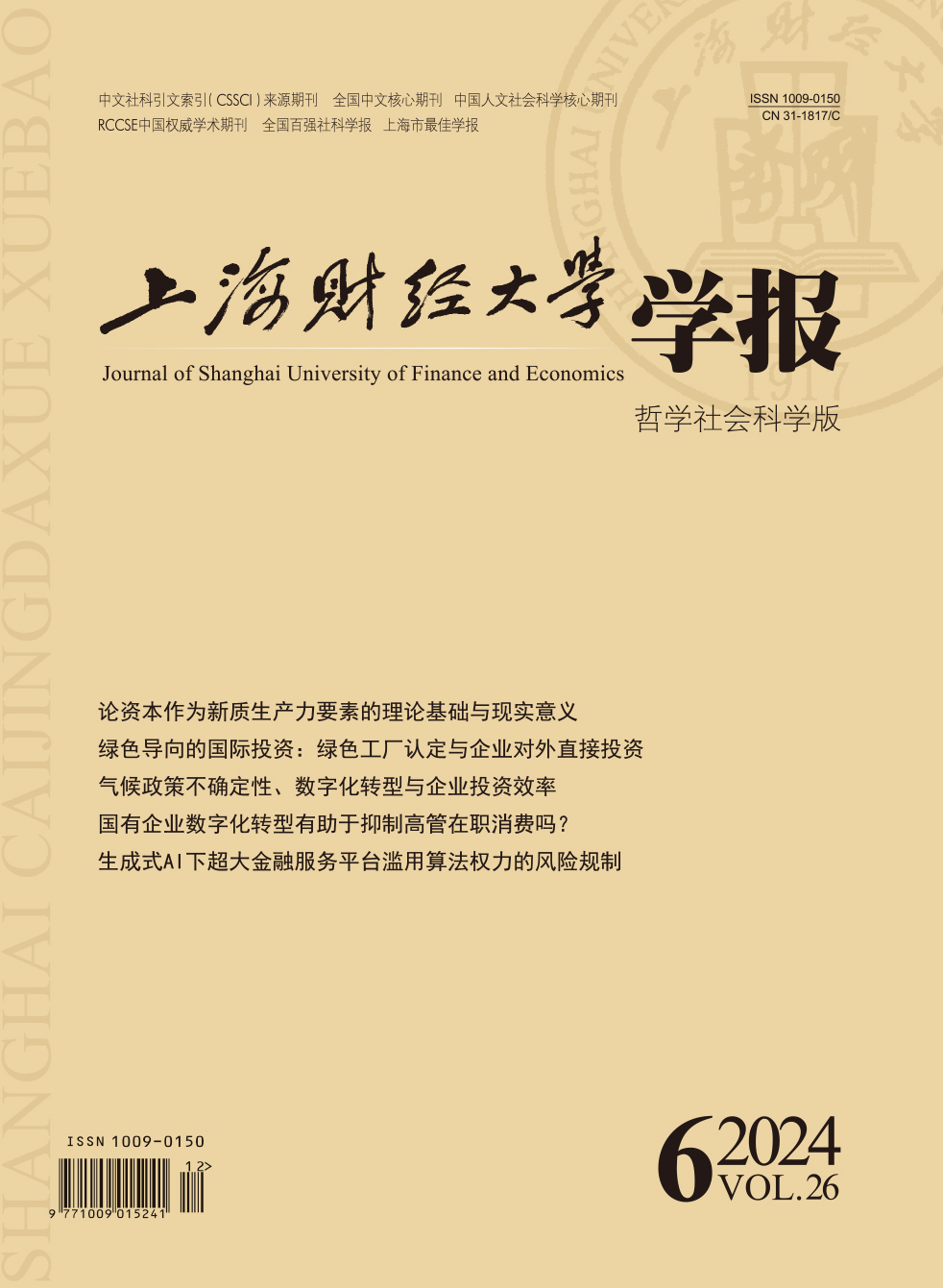创造力是组织生存和长期发展的必要条件。随着经济不确定性的加剧,在组织不断“提速”的同时,员工也经历了更大的绩效压力。为探索绩效压力对员工创造力的影响机制和边界条件,文章整合压力的交互模型与创造力的双重路径模型,对员工进行调研并通过Mplus7进行统计分析。研究结果显示,当绩效压力被评估为挑战时可通过灵活性路径从广度上促进员工创造力,当绩效压力被评估为威胁时可通过持续性路径从深度上促进员工创造力,领导-成员交换在两条路径中均具有正向调节作用。文章为绩效压力的相关研究提供了新视角,也对组织提高员工创造力有所启示。
绩效压力如何促进员工创造力——领导-成员交换的调节作用
摘要
参考文献
1 王阳,杨燕,肖婉婷,等. 认知灵活性问卷中文版测评大学生样本的效度和信度[J]. 中国心理卫生杂志,2016,(1). DOI:10.3969/j.issn.1000-6729.2016.01.002
5 Atwater L,Carmeli A. Leader–member exchange,feelings of energy,and involvement in creative work[J]. The Leadership Quarterly,2009,20(3):264–275. DOI:10.1016/j.leaqua.2007.07.009
6 Berg S T S,Grimstad A,Škerlavaj M,et al. Social and economic leader–member exchange and employee creative behavior:The role of employee willingness to take risks and emotional carrying capacity[J]. European Management Journal,2017,35(5):676–687. DOI:10.1016/j.emj.2017.08.002
7 Carr P B,Steele C M. Stereotype threat and inflexible perseverance in problem solving[J]. Journal of Experimental Social Psychology,2009,45(4):853–859. DOI:10.1016/j.jesp.2009.03.003
8 Davis C G,Macdonald S L. Threat appraisals,distress and the development of positive life changes after September 11th in a Canadian sample[J]. Cognitive Behaviour Therapy,2004,33(2):68–78. DOI:10.1080/16506070410025832
9 de Dreu C K W,Baas M,Nijstad B A. Hedonic tone and activation level in the mood-creativity link:Toward a dual pathway to creativity model[J]. Journal of Personality and Social Psychology,2008,94(5):739–756. DOI:10.1037/0022-3514.94.5.739
10 de Dreu C K W,Nijstad B A,Baas M. Behavioral activation links to creativity because of increased cognitive flexibility[J]. Social Psychological and Personality Science,2011,2(1):72–80. DOI:10.1177/1948550610381789
11 Drach-Zahavy A,Erez M. Challenge versus threat effects on the goal-performance relationship[J]. Organizational Behavior and Human Decision Processes,2002,88(2):667–682. DOI:10.1016/S0749-5978(02)00004-3
12 Eisenberger R,Aselage J. Incremental effects of reward on experienced performance pressure:Positive outcomes for intrinsic interest and creativity[J]. Journal of Organizational Behavior,2009,30(1):95–117. DOI:10.1002/job.543
13 Gardner D G. Activation theory and task design:An empirical test of several new predictions[J]. Journal of Applied Psychology,1986,71(3):411–418. DOI:10.1037/0021-9010.71.3.411
14 Gardner H K. Performance pressure as a double-edged sword:Enhancing team motivation but undermining the use of team knowledge[J]. Administrative Science Quarterly,2012,57(1):1–46. DOI:10.1177/0001839212446454
15 Gu Q X,Tang T L P,Jiang W. Does moral leadership enhance employee creativity?Employee identification with leader and leader–member exchange (LMX) in the Chinese context[J]. Journal of Business Ethics,2015,126(3):513–529. DOI:10.1007/s10551-013-1967-9
16 Gutnick D,Walter F,Nijstad B A,et al. Creative performance under pressure:An integrative conceptual framework[J]. Organizational Psychology Review,2012,2(3):189–207. DOI:10.1177/2041386612447626
18 Jensen J M,Cole M S,Rubin R S. Predicting retail shrink from performance pressure,ethical leader behavior,and store‐level incivility[J]. Journal of Organizational Behavior,2019,40(6):723–739. DOI:10.1002/job.2366
20 Khan M N,Malik M F. “My leader’s group is my group”. Leader-member exchange and employees’ behaviours[J]. European Business Review,2017,29(5):551–571. DOI:10.1108/EBR-01-2016-0013
21 King L,Gurland S T. Creativity and experience of a creative task:Person and environment effects[J]. Journal of Research in Personality,2007,41(6):1252–1259. DOI:10.1016/j.jrp.2007.01.005
22 Lazarus R S, Folkman S. Stress, appraisal and coping[M]. New York: Springer, 1984.
24 Mayer J,Mussweiler T. Suspicious spirits,flexible minds:When distrust enhances creativity[J]. Journal of Personality and Social Psychology,2011,101(6):1262–1277. DOI:10.1037/a0024407
25 Mitchell M S,Greenbaum R L,Vogel R M,et al. Can you handle the pressure?The effect of performance pressure on stress appraisals,self-regulation,and behavior[J]. Academy of Management Journal,2019,62(2):531–552. DOI:10.5465/amj.2016.0646
26 Nijstad B A,de Dreu C K W,Rietzschel E F,et al. The dual pathway to creativity model:Creative ideation as a function of flexibility and persistence[J]. European Review of Social Psychology,2010,21(1):34–77. DOI:10.1080/10463281003765323
27 Paletz S B F,Miron-Spektor E,Lin C C. A cultural lens on interpersonal conflict and creativity in multicultural environments[J]. Psychology of Aesthetics,Creativity,and the Arts,2014,8(2):237–252. DOI:10.1037/a0035927
28 Pan W,Sun L Y,Chow I H S. Leader-member exchange and employee creativity:Test of a multilevel moderated mediation model[J]. Human Performance,2012,25(5):432–451. DOI:10.1080/08959285.2012.721833
29 Prem R,Ohly S,Kubicek B,et al. Thriving on challenge stressors?Exploring time pressure and learning demands as antecedents of thriving at work[J]. Journal of Organizational Behavior,2017,38(1):108–123. DOI:10.1002/job.2115
30 Qu R J,Janssen O,Shi K. Leader–member exchange and follower creativity:The moderating roles of leader and follower expectations for creativity[J]. The International Journal of Human Resource Management,2017,28(4):603–626. DOI:10.1080/09585192.2015.1105843
31 Rietzschel E F,Nijstad B A,Stroebe W. Relative accessibility of domain knowledge and creativity:The effects of knowledge activation on the quantity and originality of generated ideas[J]. Journal of Experimental Social Psychology,2007,43(6):933–946. DOI:10.1016/j.jesp.2006.10.014
32 Saeed B B,Afsar B,Cheema S,et al. Leader-member exchange and innovative work behavior:The role of creative process engagement,core self-evaluation,and domain knowledge[J]. European Journal of Innovation Management,2019,22(1):105–124. DOI:10.1108/EJIM-11-2017-0158
33 Tanaka J S,Panter A T,Winborne W C. Dimensions of the need for cognition:Subscales and gender differences[J]. Multivariate Behavioral Research,1988,23(1):35–50. DOI:10.1207/s15327906mbr2301_2
34 Volmer J,Spurk D,Niessen C. Leader-member exchange (LMX),job autonomy,and creative work involvement[J]. The Leadership Quarterly,2012,23(3):456–465. DOI:10.1016/j.leaqua.2011.10.005
引用本文
范晓倩, 于斌. 绩效压力如何促进员工创造力——领导-成员交换的调节作用[J]. 上海财经大学学报, 2021, 23(2): 108-120.
导出参考文献,格式为:





 3609
3609  3785
3785

